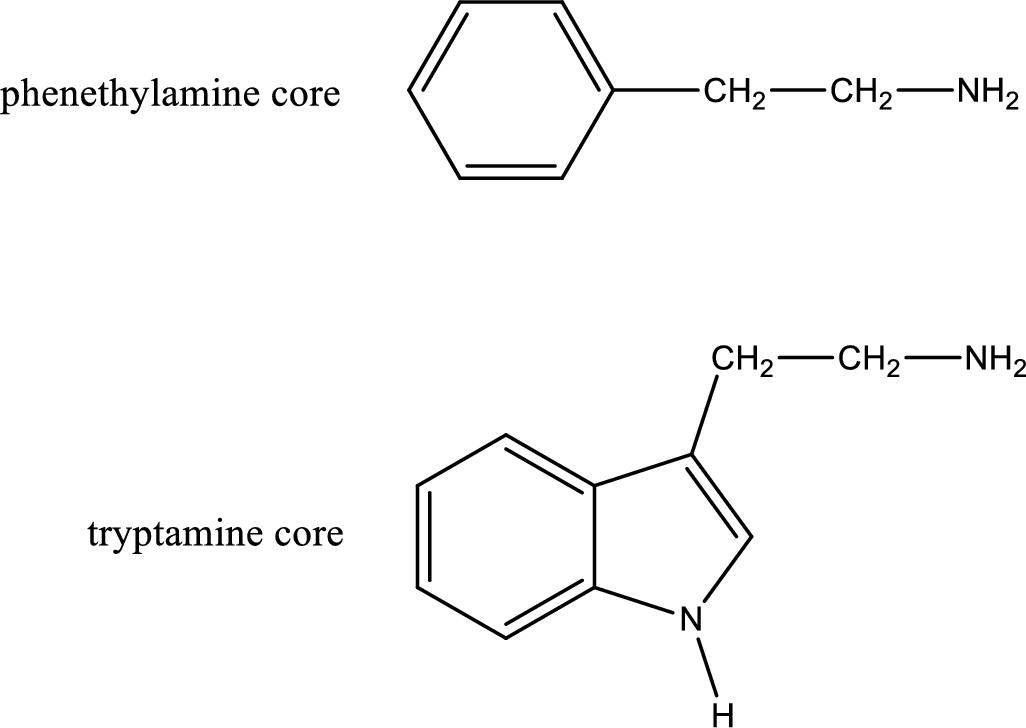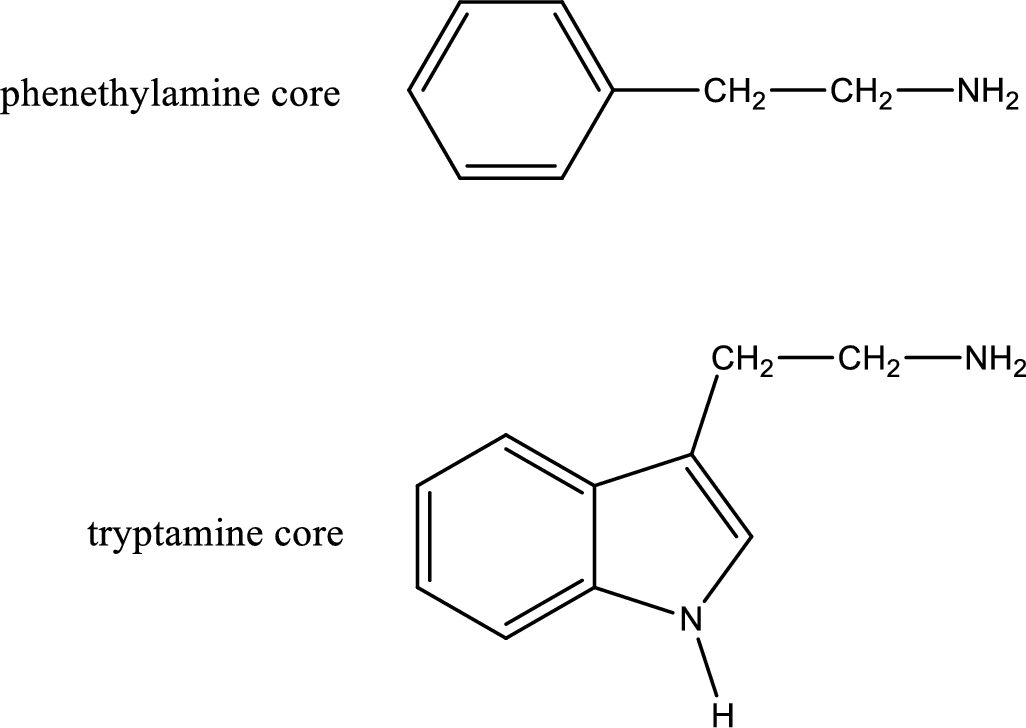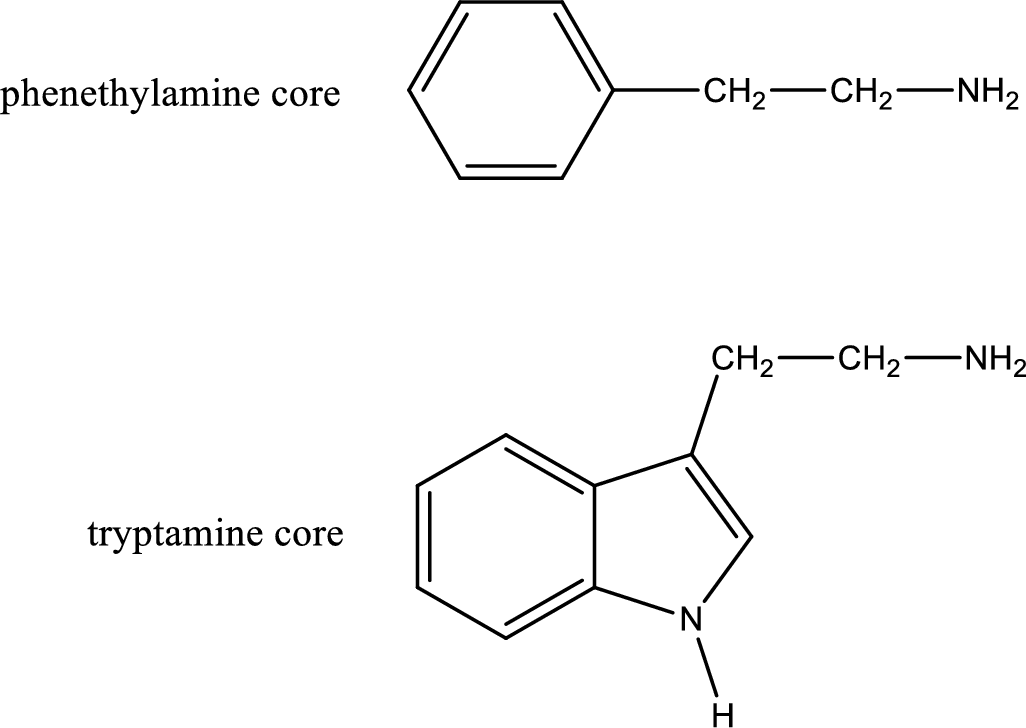
(a)
Interpretation:
Dopamine is a decongestant or central nervous system stimulant or a neurotransmitter has to be indicated.
Concept Introduction:
Generally

There are three types of effects that an amine can exert. They are neurotransmitters, central nervous system stimulants and decongestants. Neurotransmitters are the substances that are present in human body that help in passing impulse of nerves from one cell to another. Central nervous stimulants are the substances that help in speeding up of physical and mental processes. Decongestant is a substance that is used to relieve nasal congestion.
(b)
Interpretation:
Methamphetamine is a decongestant or central nervous system stimulant or a neurotransmitter has to be indicated.
Concept Introduction:
Generally amines are toxic in nature. If a compound contains only amine as its functional group, they will be often toxic. Due to this, in biological systems they are not prevalent. If the same compound contains more than one functional group apart from amine means it can be physiologically active. Important “core” structures that are frequently encountered in polyfunctional amines that have biological effects are tryptamine core and phenethylamine core.

There are three types of effects that an amine can exert. They are neurotransmitters, central nervous system stimulants and decongestants. Neurotransmitters are the substances that are present in human body that help in passing impulse of nerves from one cell to another. Central nervous stimulants are the substances that help in speeding up of physical and mental processes. Decongestant is a substance that is used to relieve nasal congestion.
(c)
Interpretation:
Pseudoephedrine is a decongestant or central nervous system stimulant or a neurotransmitter has to be indicated.
Concept Introduction:
Generally amines are toxic in nature. If a compound contains only amine as its functional group, they will be often toxic. Due to this, in biological systems they are not prevalent. If the same compound contains more than one functional group apart from amine means it can be physiologically active. Important “core” structures that are frequently encountered in polyfunctional amines that have biological effects are tryptamine core and phenethylamine core.

There are three types of effects that an amine can exert. They are neurotransmitters, central nervous system stimulants and decongestants. Neurotransmitters are the substances that are present in human body that help in passing impulse of nerves from one cell to another. Central nervous stimulants are the substances that help in speeding up of physical and mental processes. Decongestant is a substance that is used to relieve nasal congestion.
(d)
Interpretation:
Desoxyn is a decongestant or central nervous system stimulant or a neurotransmitter has to be indicated.
Concept Introduction:
Generally amines are toxic in nature. If a compound contains only amine as its functional group, they will be often toxic. Due to this, in biological systems they are not prevalent. If the same compound contains more than one functional group apart from amine means it can be physiologically active. Important “core” structures that are frequently encountered in polyfunctional amines that have biological effects are tryptamine core and phenethylamine core.

There are three types of effects that an amine can exert. They are neurotransmitters, central nervous system stimulants and decongestants. Neurotransmitters are the substances that are present in human body that help in passing impulse of nerves from one cell to another. Central nervous stimulants are the substances that help in speeding up of physical and mental processes. Decongestant is a substance that is used to relieve nasal congestion.
Want to see the full answer?
Check out a sample textbook solution
Chapter 17 Solutions
EBK GENERAL, ORGANIC, AND BIOLOGICAL CH
- How would medical practice be affected if both cocaine and amphetamine were placed on Schedule I?arrow_forwardActivity of thionamide is potentiated by all of the following, except:A. AnticoagulantsB. Beta blockersC. SulfasalazineD. ACE inhibitorsE. Theophyllinearrow_forwardWhat are the side effects/adverse effects of diphenhydramine hydrochloride in the following: 1. Integumentary: - - - - - 2. Respiratory: - - - - -arrow_forward
- Cocaine is very similar to which of the following in its effects on the central nervous system?a. Seconal b. codeine c. cannabis d. amphetaminearrow_forwardWhich of the following correctly does not correctly describe the composition of a phosphatidylethanolamine? OA. Glycerol residue B. Phosphate group O c. One fatty acid residue D. Ethanolamine residue O E. All of the abovearrow_forward18.1 An elderly patient with a history of heart disease i brought to the emergency room with difficulty breathing Examination reveals that she has pulmonary edema Which treatment is indicated? A. Acetazolamide. B. Chlorthalidone. C. Furosemide. D. Hydrochlorothiazide. E. Spironolactone.arrow_forward
- Epilepsy is often treated with a combination of drugs such as carbamazepine and phenytoin (polytherapy). CYP3A4 is induced by phenytoin and carbamazepine. Carbamzeipine is cleared by CYP3A4, but phenytoin is not cleared by CYP3A4. What problems might you expect if (a) carbamazepine is removed or (b) phenytoin is removed from this two-drug regimen.arrow_forwardWhat could be some of the reasons why some patients experienced side effects with ACE inhibitors?arrow_forwardWhat is the mode of action of hydrocholathiazide? A) Where, physiologically speaking, does it work. Be as complete as possible including cells, receptors, etc involved.arrow_forward
 Human Physiology: From Cells to Systems (MindTap ...BiologyISBN:9781285866932Author:Lauralee SherwoodPublisher:Cengage Learning
Human Physiology: From Cells to Systems (MindTap ...BiologyISBN:9781285866932Author:Lauralee SherwoodPublisher:Cengage Learning
